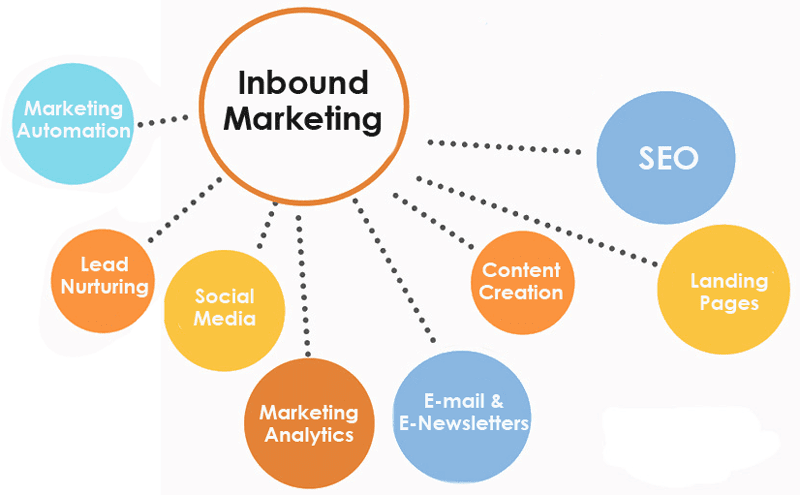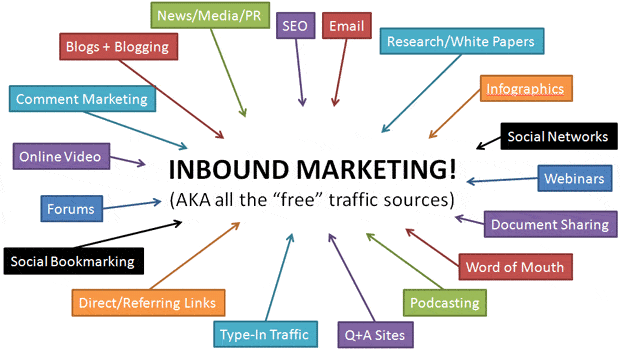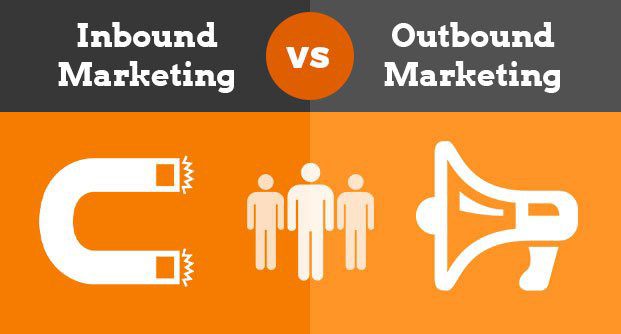What is Inbound Marketing?
Inbound marketing refers to a marketing methodology that is made to draw potential customers in, instead of pushing products or services outward. This is done to avoid pushing the business and its services on potential customers in hopes of generating leads and working on strategies to attract customers and visitors to the business.
Some marketers find inbound marketing to be a more focused and natural way of carrying out digital marketing. This is because inbound marketing uses a combination of marketing channels in fresh and creative ways to grab the attention of site visitors and potential customers.
Some of these marketing channels include content marketing, SEO, and the use of social media. In short, the goals of a successful inbound marketing campaign are to increase the business’s reach, drive quality traffic and engagement, and to increase conversions using only “owned” and “earned” media.

Why is Inbound Marketing Important?
Inbound marketing is important because it gives businesses a new way of reaching potential customers on a variety of marketing channels. As customers are the lifeblood of any business, it stands to reason that the more you do to connect with customers and attract them to your business, the better for your business overall.
Inbound marketing offers an alternative way of doing things when a business might need to take a step back and reevaluate not just how they reach customers, but what that looks like for the long haul. Attracting visitors is one thing, but converting those visitors into customers changes the game considerably.

How Is Inbound Marketing Different from Outbound Marketing?
In addition to inbound marketing, there is another marketing channel known as outbound marketing. With such similar names, it can be easy to think these two marketing types are interchangeable, or at least connected in some way, but they’re actually total opposites.
Inbound marketing is all about drawing potential customers in.
Outbound marketing is all about outwardly pushing a business’ offering toward potential customers. In other words, inbound marketing focuses on earning attention while outbound marketing usually involves buying attention.
Inbound Marketing and Earned/Owned Media
Inbound marketing actively uses owned and earned media to engage prospective customers in creative ways. let’s take a closer look at these media types:
Owned Media
Owned Media refers to those channels that a business already has control over. These can be your business website, blog, YouTube channel, and business social media profiles. On owned media, you have the power to choose what to publish, how to publish it, and when.
If working from a business website, chances are you’re also working with a content management system in some capacity, giving you and your team the access and power needed to control your business’s content output across all lines, avenues, and channels.
Earned Media
Earned media refers to the coverage your business earns as a result of your hustle and hard work. It includes traditional coverage in newspapers and magazines as well as coverage on news sites, social media posts, campaign hashtags, and more online. Valuable earned media also includes any coverage gained through digital PR as well as online reviews from reputable sources and similar businesses and conversations in online forums.
The one downside to earned media is that you have less control over it than you do over owned media. However, earned media is like a reward and acknowledgment that your inbound marketing campaign is working so well that other media outlets are taking notice.
Outbound Marketing and Paid Media
Outbound marketing is most closely associated with paid media. This can be anything and everything from offline advertising, pay-per-click (PPC) and display advertising, and paid emails.
In addition to this, paid media can also include social media advertising such as promoted posts on Facebook, LinkedIn, X, and Instagram, and even work with influencers on different social media channels. In fact, it is important to note that social media marketing is part of both inbound and outbound marketing. The category it ultimately falls under depends on how you use it.

What Are Some Benefits of Inbound Marketing?
Overall, the two biggest benefits of this type of marketing are the following:
Increased Trust Amongst (Potential) Customers
One of the key points of inbound marketing is that it gives potential customers the information they are looking for regarding a product, service, or offer in a creative way. It is not about badgering customers by pushing often unwanted sales at every opportunity possible. Rather, it is about presenting your business as a reliable resource that is useful and trustworthy.
One way to think about it is as planting a seed: you show potential customers that your business is a possible solution for their specific query, want, or need. Hopefully, they’ll remember your business and come back when they’re ready to make a purchase.
Options
Putting all your eggs in one basket is never a good idea, which is why inbound marketing is so profound. This marketing strategy encourages you to market and pursue quality traffic from a number of sources such as organic search, referrals from websites, and social media referrals. In other words, you have a lot of streams leading to the wider lake of your business, meaning your potential customers have a number of ways of finding you.

Since inbound marketing is all about leading potential customers to you, are you sure that your website is ready to receive them? Directive wants to ensure that your business’ website is everything you and your potential customers need it to be, from blogs and resources to navigability and more. Get a free proposal from us today to see how your business site measures up.